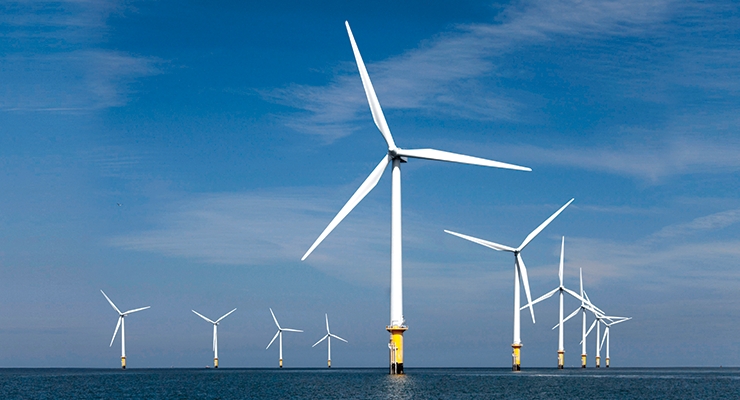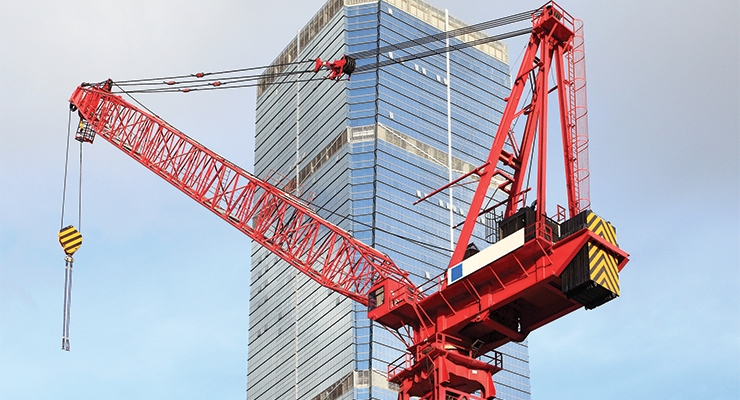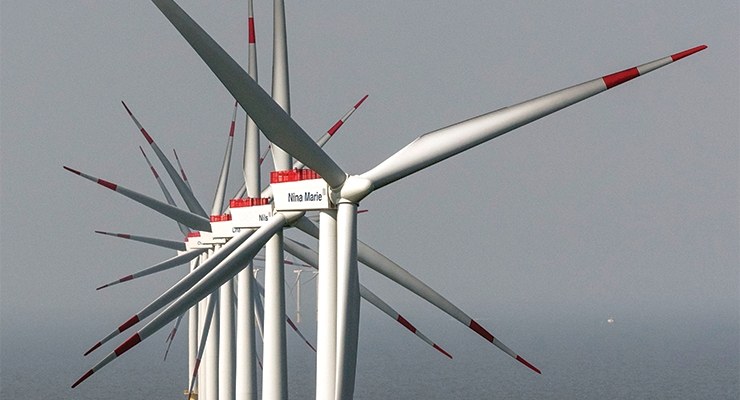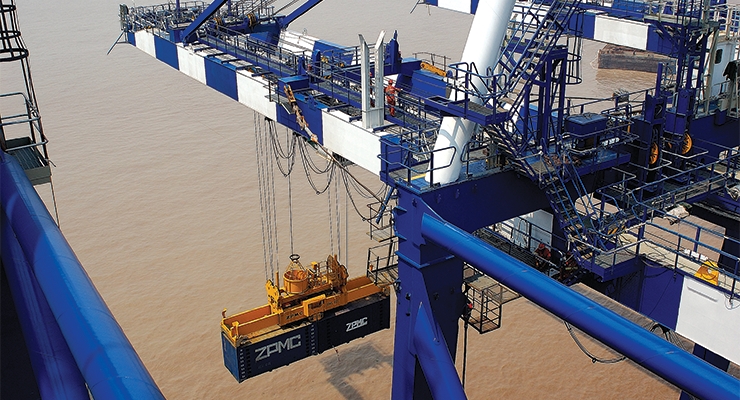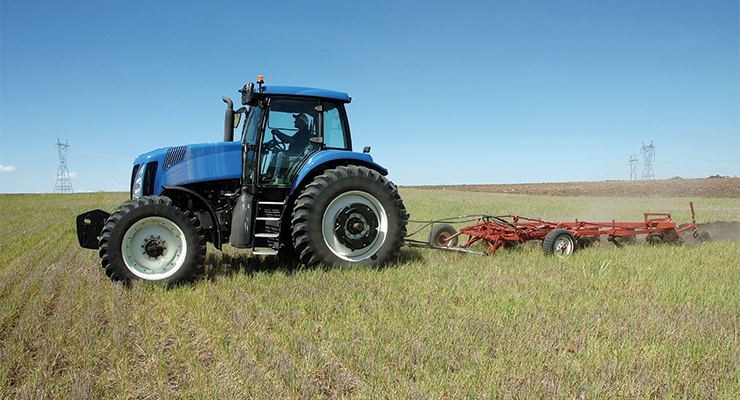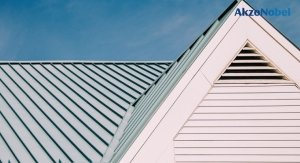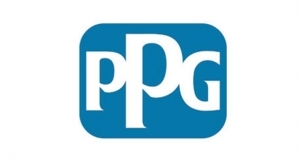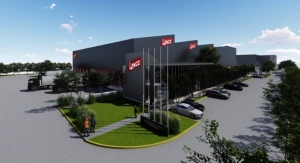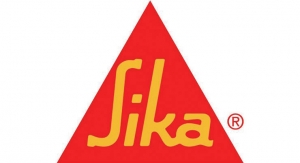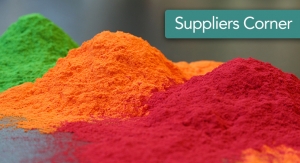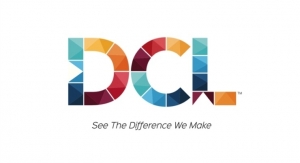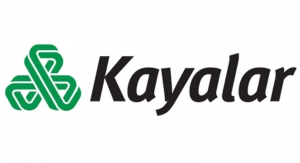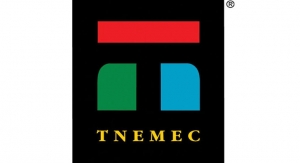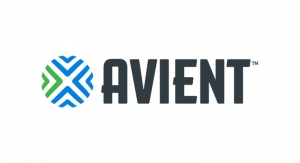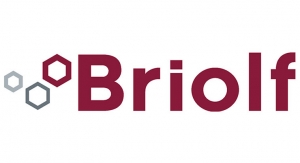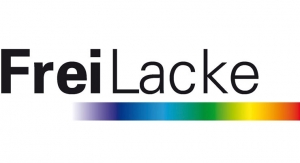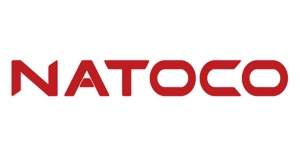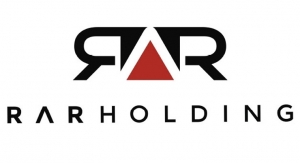Kerry Pianoforte, Editor06.04.18
Industrial coatings manufacturers interviewed for this article reported that the market has experienced growth over the past year with that trend expected to continue for 2018 and beyond.
“The industrial coatings market has seen solid growth driven by global GDP, industrial production, global infrastructure growth and strength in the building and construction markets,” said Michael Cash, senior vice president, Industrial Coatings, Axalta Coating Systems. “Industrial production increases have led to overall high single digit organic growth for Axalta in our Industrial end-market for several quarters now, with particular strength in electrical motor coating, general industrial liquids and powders, and ongoing strength in wood coatings.”
“In 2017, the industrial markets that we are involved in have been quite challenged particularly in the marine and oil and gas sectors,” said Robert Wong, group director, head of Protective & Industrial, Hempel. “The newbuilding market in marine remains at historic levels as over-supply in the shipping industry persists, and correction is still being played out. The oil & gas offshore sector is starting to grow again since the stabilizing of the oil price over the last year, and we see this trend continuing this year. There continues to be steady growth in the infrastructure and the wind-power sectors.”
“The industrial coatings market had a strong performance in 2017,” said Dave Zelch, vice president, Global Marketing, General Industrial Coatings, Sherwin Williams Company. “Global manufacturing has shown signs of growth and continued opportunities in 2018 and beyond.”
Chris Bradford, segment director, Packaging, Coil and Extrusion, AkzoNobel Industrial Coatings, said that in the U.S. coil and extrusion coatings have experienced steady growth led by the building and construction sector. “The market for coatings for metal packaging has been challenging, as metal containers continue to compete with plastic and flexible packaging types.
However, there are some pockets of growth, including unique container shapes, such as the aluminum bottle can, and textured varnishes that add interest and appeal.”
PPG continued to experience solid growth in its global industrial coatings business. “In fact, first-quarter sales for 2018 were up more than 10 percent compared to the same period in 2017,” said Tim Knavish, PPG senior vice president, Industrial Coatings. “We saw balanced growth across the regions.”
There are a number of segments that offer growth opportunities for industrial coatings, these include onshore oil and gas maintenance; conventional power maintenance; offshore new construction; infrastructure new construction; offshore wind-power; and heavy duty equipment.
Knavish said he expects global demand for industrial coatings to grow strongly overall, but with results that vary by geographic market and end-use applications. “The global automotive OEM segment is a perfect illustration of this phenomena, as sales for automotive coatings are modest to robust in Europe, Mexico, Brazil and China, but modestly down in the United States and Canada.
“In the United States and Canada, the automotive market will be more than offset by growth in the residential and commercial construction markets, which consume high volumes of coil and extrusion coatings for architectural metals. Construction markets are expected to be stronger in Europe as well, while demand for architectural coatings will remain high, as it has been for several years, in China and the Asia-Pacific region. Busy building and construction activity typically bodes well for the heavy-duty equipment segment as well. Other growth segments include electronic materials, packaging, OLED (organic light-emitting diode) materials and automotive components.”
Cash said he sees opportunities across each of Axalta’s Industrial businesses driven by customer focus on raising quality improvement standards and reduction of energy usage, as well as a keen interest in reducing lead times and offering mass customization. “More than ever, customers across all segments – heavy duty equipment, oil and gas, electrical motors, wood coatings, and building and construction – are actively pursuing higher performing technologies.”
“Macroeconomic trends support global growth in heavy construction and agricultural machinery,” said Zelch. “Growth in both residential and commercial development look to continue through 2018. There is also opportunity driven by infrastructure investments on the horizon in developed countries; these markets are poised to provide opportunities in short to medium term.”
“Based on our market presence, we see commercial architecture as the greatest opportunity for growth,” said Bradford. “Construction remains strong, and specific initiatives such as the ‘One belt, one road’ continue to drive large infrastructure and economic development.”
Growth Regions
By region, China remains the major impetus for growth in the industrial coatings market.
“Geographically, China still drives over 40 percent of global industrial coatings consumption,” said Cash. “China has also emerged as a leader in technology within the industrial coatings industry. For example, China has become a major pioneer in electric vehicle development and adoption, a strong indicator of growth for the electric insulation industry. We’ve engineered a range of electrical insulation products in China specifically tailored to the needs of electric vehicle motors in that region. Infrastructure and architecture are growing at a rapid rate within emerging markets like Malaysia, Indonesia, and Vietnam. In the U.S., housing starts and remodeling industries anticipate solid growth throughout the next five years, which represents immense opportunity in the wood, powder, and coil coatings markets.”
“What many miss in the headlines regarding China growth slowing from its peak several years ago is that a slower growth rate in China relative to prior years is still faster than much of Europe and North America,” noted Zelch. “Similarly, while accelerating growth in Europe and North America relative to previous years is a positive sign, what we’ve seen across manufacturing segments is pockets of stronger growth.”
Asia remains a very strong market for PPG as well. “Demand has continued to improve in Latin America as well, with above-market growth in Mexico and Central America,” said Knavish. “We’ve increased sales in South America, particularly Brazil, as economic conditions gradually improve in that key country. Industrial production growth rates in the United States, Canada and Europe remain consistent, which is favorable for coatings demand in those markets.”
The global paints and coatings market is predicted to continue to grow in both advanced and emerging markets, noted Wong. “Growth will be higher in the emerging countries in Asia, particularly China and India. Construction, transportation, automotive, decorative and industrial sectors will continue to drive growth.”
Growth in this market will be driven mainly by increasing demand for high-performance products in emerging and transitional economies, with an increasing emphasis on globalized processes.
Balancing Act
Customers have high standards when it comes to choosing the correct industrial coating for their high value asset. Selecting the right coating is important, but of equal importance is substrate preparation and application. Customers need to balance cost, value and performance.
“Basically, it’s all about protecting their assets,” said Wong. “It’s not only about the coatings, it is also about advising on the process to make sure the solution is the right one for the specific project. Our experience is that the market is looking for sales and application processes, which are easy and quick, and at the same time are strong and sustainable. At Hempel, we partner with our customers to develop new and innovative solutions for all our segments (Marine, Protective, Industrial, Decorative). This approach ensures their needs are met.”
Zelch of Sherwin-Williams noted that there are two key components to performance for industrial coatings. “The first is how the coating applies – is it easy to spray, how fast it dries to touch, stack, and ship, and so on. The second is how the coating performs in the field – does it resist corrosion, does it chip easily, does the color resist fading, and so forth. Industrial OEMs want both, and more of them are looking at the total value of the coating over the lifecycle of the asset to help choose the right coating solution for them.”
For the most-part, customer needs are universal throughout all industrial segments, said Cash. “Customers seek easy to use, quick to apply and cure, and economically feasible solutions that remain durable and preserve the look of their substrate, while eliminating or decreasing impact on the environment. In addition to these general attributes, we’ve been able to engineer a multitude of other solutions by studying our customers’ coating processes and day-to-day challenges.”
Building and construction customers must ensure their installations look good for a long time. “They specify coatings that are proven to provide long-term durability and weather resistance,” said Bradford. “They also seek functional and aesthetic features that will help differentiate their products. In developing coatings for metal packaging, we strive to balance the demands of the consumers, the food and beverage brands, and the can-makers. We develop coatings that eliminate materials of concern, while preserving flavor and freshness and offering highly efficient performance on can manufacturing lines.”
Aesthetics are important but industrial coatings must also withstand harsh environments such as heat and humidity, salt and wind. Industrial coatings must offer a balance of pleasing colors and high performance attributes.
“Increased corrosion-resistance is always at the top of the wish list for improved performance among customers, especially when it comes to accommodating the increased use of mixed metal and plastic substrates for automobiles, heavy-duty equipment and consumer products,” said Knavish. “Of course, the desire to make coatings more corrosion resistant is always challenged by the need to make them more environmentally friendly. Developing coatings, resins and pretreatment products that can achieve both requirements at the same time is a constant area of emphasis for research and development at PPG. Color innovation is another area of concentration, particularly as manufacturers seek to customize products to meet the demands of their customers.
Transition to Water
Solvent coatings are still commonly used in the industrial sector, but the trend is increasingly moving towards water and high solid formulations. Environmental regulations, with China leading the charge, have become increasingly strict over the past few years and the industrial coating market is keeping a close eye on these developments.
“We definitely see more of a trend towards water-based and high volume solids products to mitigate the ever-increasing requirement to reduce VOC content in products,” said Wong. “China and the state of California have imposed quite challenging legislation for coatings manufacturers.
“Iso-cyanate containing polyurethanes due to health and safety effects are also a key issue within the industry, where certain locations and oil majors do not allow for the use of these type of coatings,” Wong added. “In the marine sector, the use of biocides in antifouling coatings will be further scrutinized, on the back of the current media focus on the amount of plastic pollution in the oceans. This will drive the industry for further innovation for non-biocide containing coatings.”
“Governments around the world are creating legislation for industrial manufacturers to reduce emissions, and we look for areas where coatings can play a role in supporting compliance,” said Zelch. “Shifting to waterborne coatings from solvent-borne is one way that OEMs can reduce their emissions. Incorporating powder coatings into finishing operations may also help a manufacturer support sustainability initiatives. The challenge is to identify a coating that meets both the regulation and also the performance requirement. In the container market, where much of the finishing is done in China, our AquaGuard waterborne coating has received OEM approvals for performance as it helps manufacturers meet VOC standards.”
Cash observed that customers use both solvent-based and water-based coatings, with some industrial segments shifting to the latter based on stricter environmental regulations in certain regions. “Roughly eighty percent of the wood building products market in the United States has shifted to waterborne products. Cabinetry and furniture industries still use solvent borne products, but regions such as southern California, the Mountain states, Texas, and the North East are increasingly focused on lowering VOCs, which we anticipate will impact business decisions in those regions. We have launched Hydropon, a water-based PVDF coating for our architectural extrusions market, and have received great reviews on this product to-date. For general industrial we’ve developed a 1K waterborne direct to metal topcoat for ACE and a 2K waterborne epoxy for metal components. We also launched our Voltahyd 2250 waterborne impregnating resin product line, specifically targeted for electric vehicles.”
Recent environmental activity has been limited for coil and extrusion coatings. “The EU is nearing the end of exceptions to banning the use of Strontium Chromate, and China is currently reviewing its final rules on significant volatile organic compound (VOC) reductions,” said Bradford. “Additional materials of concern (MOCs) are under consideration, but there is currently no other pending legislation. For food and beverage packaging, the current focus is on eliminating materials of concern, such as BPA (bisphenol-A). This is happening globally, although the shift away from BPA and other MOCs is most advanced in North America.”
The move away from solvent to water is a trend that continues to drive research and development at PPG. “As a company with products and expertise in every major platform – liquid, powder and electro-coatings as well as pretreatment products – PPG is uniquely equipped to take the environmental advances we develop for one technology or formulation and potentially apply them to another,” said Knavish. “While we understand the growing preference for powder and e-coat as environmentally progressive coatings solutions, we also remain committed to advancement of sprayable liquid-coatings technologies. Many of our customers are operationally invested in liquid. We also understand that liquid coatings have several distinct application and appearance advantages that are difficult to replicate with other technologies. So, we are investing across technologies to provide our customers with sustainable solutions, including a heavy focus on water-based coatings.
“Our commitment to and knowledge of these products – combined with our expertise about their alternatives – have led to the development of several advanced high-solid, low-VOC liquid coatings, particularly in the coil and electronics coatings industry segments,” Knavish continued. “Our broad-based coatings application knowledge and versatility enable us to work with customers to find solutions to any environmental compliance challenge they might face.”
“The industrial coatings market has seen solid growth driven by global GDP, industrial production, global infrastructure growth and strength in the building and construction markets,” said Michael Cash, senior vice president, Industrial Coatings, Axalta Coating Systems. “Industrial production increases have led to overall high single digit organic growth for Axalta in our Industrial end-market for several quarters now, with particular strength in electrical motor coating, general industrial liquids and powders, and ongoing strength in wood coatings.”
“In 2017, the industrial markets that we are involved in have been quite challenged particularly in the marine and oil and gas sectors,” said Robert Wong, group director, head of Protective & Industrial, Hempel. “The newbuilding market in marine remains at historic levels as over-supply in the shipping industry persists, and correction is still being played out. The oil & gas offshore sector is starting to grow again since the stabilizing of the oil price over the last year, and we see this trend continuing this year. There continues to be steady growth in the infrastructure and the wind-power sectors.”
“The industrial coatings market had a strong performance in 2017,” said Dave Zelch, vice president, Global Marketing, General Industrial Coatings, Sherwin Williams Company. “Global manufacturing has shown signs of growth and continued opportunities in 2018 and beyond.”
Chris Bradford, segment director, Packaging, Coil and Extrusion, AkzoNobel Industrial Coatings, said that in the U.S. coil and extrusion coatings have experienced steady growth led by the building and construction sector. “The market for coatings for metal packaging has been challenging, as metal containers continue to compete with plastic and flexible packaging types.
However, there are some pockets of growth, including unique container shapes, such as the aluminum bottle can, and textured varnishes that add interest and appeal.”
PPG continued to experience solid growth in its global industrial coatings business. “In fact, first-quarter sales for 2018 were up more than 10 percent compared to the same period in 2017,” said Tim Knavish, PPG senior vice president, Industrial Coatings. “We saw balanced growth across the regions.”
There are a number of segments that offer growth opportunities for industrial coatings, these include onshore oil and gas maintenance; conventional power maintenance; offshore new construction; infrastructure new construction; offshore wind-power; and heavy duty equipment.
Knavish said he expects global demand for industrial coatings to grow strongly overall, but with results that vary by geographic market and end-use applications. “The global automotive OEM segment is a perfect illustration of this phenomena, as sales for automotive coatings are modest to robust in Europe, Mexico, Brazil and China, but modestly down in the United States and Canada.
“In the United States and Canada, the automotive market will be more than offset by growth in the residential and commercial construction markets, which consume high volumes of coil and extrusion coatings for architectural metals. Construction markets are expected to be stronger in Europe as well, while demand for architectural coatings will remain high, as it has been for several years, in China and the Asia-Pacific region. Busy building and construction activity typically bodes well for the heavy-duty equipment segment as well. Other growth segments include electronic materials, packaging, OLED (organic light-emitting diode) materials and automotive components.”
Cash said he sees opportunities across each of Axalta’s Industrial businesses driven by customer focus on raising quality improvement standards and reduction of energy usage, as well as a keen interest in reducing lead times and offering mass customization. “More than ever, customers across all segments – heavy duty equipment, oil and gas, electrical motors, wood coatings, and building and construction – are actively pursuing higher performing technologies.”
“Macroeconomic trends support global growth in heavy construction and agricultural machinery,” said Zelch. “Growth in both residential and commercial development look to continue through 2018. There is also opportunity driven by infrastructure investments on the horizon in developed countries; these markets are poised to provide opportunities in short to medium term.”
“Based on our market presence, we see commercial architecture as the greatest opportunity for growth,” said Bradford. “Construction remains strong, and specific initiatives such as the ‘One belt, one road’ continue to drive large infrastructure and economic development.”
Growth Regions
By region, China remains the major impetus for growth in the industrial coatings market.
“Geographically, China still drives over 40 percent of global industrial coatings consumption,” said Cash. “China has also emerged as a leader in technology within the industrial coatings industry. For example, China has become a major pioneer in electric vehicle development and adoption, a strong indicator of growth for the electric insulation industry. We’ve engineered a range of electrical insulation products in China specifically tailored to the needs of electric vehicle motors in that region. Infrastructure and architecture are growing at a rapid rate within emerging markets like Malaysia, Indonesia, and Vietnam. In the U.S., housing starts and remodeling industries anticipate solid growth throughout the next five years, which represents immense opportunity in the wood, powder, and coil coatings markets.”
“What many miss in the headlines regarding China growth slowing from its peak several years ago is that a slower growth rate in China relative to prior years is still faster than much of Europe and North America,” noted Zelch. “Similarly, while accelerating growth in Europe and North America relative to previous years is a positive sign, what we’ve seen across manufacturing segments is pockets of stronger growth.”
Asia remains a very strong market for PPG as well. “Demand has continued to improve in Latin America as well, with above-market growth in Mexico and Central America,” said Knavish. “We’ve increased sales in South America, particularly Brazil, as economic conditions gradually improve in that key country. Industrial production growth rates in the United States, Canada and Europe remain consistent, which is favorable for coatings demand in those markets.”
The global paints and coatings market is predicted to continue to grow in both advanced and emerging markets, noted Wong. “Growth will be higher in the emerging countries in Asia, particularly China and India. Construction, transportation, automotive, decorative and industrial sectors will continue to drive growth.”
Growth in this market will be driven mainly by increasing demand for high-performance products in emerging and transitional economies, with an increasing emphasis on globalized processes.
Balancing Act
Customers have high standards when it comes to choosing the correct industrial coating for their high value asset. Selecting the right coating is important, but of equal importance is substrate preparation and application. Customers need to balance cost, value and performance.
“Basically, it’s all about protecting their assets,” said Wong. “It’s not only about the coatings, it is also about advising on the process to make sure the solution is the right one for the specific project. Our experience is that the market is looking for sales and application processes, which are easy and quick, and at the same time are strong and sustainable. At Hempel, we partner with our customers to develop new and innovative solutions for all our segments (Marine, Protective, Industrial, Decorative). This approach ensures their needs are met.”
Zelch of Sherwin-Williams noted that there are two key components to performance for industrial coatings. “The first is how the coating applies – is it easy to spray, how fast it dries to touch, stack, and ship, and so on. The second is how the coating performs in the field – does it resist corrosion, does it chip easily, does the color resist fading, and so forth. Industrial OEMs want both, and more of them are looking at the total value of the coating over the lifecycle of the asset to help choose the right coating solution for them.”
For the most-part, customer needs are universal throughout all industrial segments, said Cash. “Customers seek easy to use, quick to apply and cure, and economically feasible solutions that remain durable and preserve the look of their substrate, while eliminating or decreasing impact on the environment. In addition to these general attributes, we’ve been able to engineer a multitude of other solutions by studying our customers’ coating processes and day-to-day challenges.”
Building and construction customers must ensure their installations look good for a long time. “They specify coatings that are proven to provide long-term durability and weather resistance,” said Bradford. “They also seek functional and aesthetic features that will help differentiate their products. In developing coatings for metal packaging, we strive to balance the demands of the consumers, the food and beverage brands, and the can-makers. We develop coatings that eliminate materials of concern, while preserving flavor and freshness and offering highly efficient performance on can manufacturing lines.”
Aesthetics are important but industrial coatings must also withstand harsh environments such as heat and humidity, salt and wind. Industrial coatings must offer a balance of pleasing colors and high performance attributes.
“Increased corrosion-resistance is always at the top of the wish list for improved performance among customers, especially when it comes to accommodating the increased use of mixed metal and plastic substrates for automobiles, heavy-duty equipment and consumer products,” said Knavish. “Of course, the desire to make coatings more corrosion resistant is always challenged by the need to make them more environmentally friendly. Developing coatings, resins and pretreatment products that can achieve both requirements at the same time is a constant area of emphasis for research and development at PPG. Color innovation is another area of concentration, particularly as manufacturers seek to customize products to meet the demands of their customers.
Transition to Water
Solvent coatings are still commonly used in the industrial sector, but the trend is increasingly moving towards water and high solid formulations. Environmental regulations, with China leading the charge, have become increasingly strict over the past few years and the industrial coating market is keeping a close eye on these developments.
“We definitely see more of a trend towards water-based and high volume solids products to mitigate the ever-increasing requirement to reduce VOC content in products,” said Wong. “China and the state of California have imposed quite challenging legislation for coatings manufacturers.
“Iso-cyanate containing polyurethanes due to health and safety effects are also a key issue within the industry, where certain locations and oil majors do not allow for the use of these type of coatings,” Wong added. “In the marine sector, the use of biocides in antifouling coatings will be further scrutinized, on the back of the current media focus on the amount of plastic pollution in the oceans. This will drive the industry for further innovation for non-biocide containing coatings.”
“Governments around the world are creating legislation for industrial manufacturers to reduce emissions, and we look for areas where coatings can play a role in supporting compliance,” said Zelch. “Shifting to waterborne coatings from solvent-borne is one way that OEMs can reduce their emissions. Incorporating powder coatings into finishing operations may also help a manufacturer support sustainability initiatives. The challenge is to identify a coating that meets both the regulation and also the performance requirement. In the container market, where much of the finishing is done in China, our AquaGuard waterborne coating has received OEM approvals for performance as it helps manufacturers meet VOC standards.”
Cash observed that customers use both solvent-based and water-based coatings, with some industrial segments shifting to the latter based on stricter environmental regulations in certain regions. “Roughly eighty percent of the wood building products market in the United States has shifted to waterborne products. Cabinetry and furniture industries still use solvent borne products, but regions such as southern California, the Mountain states, Texas, and the North East are increasingly focused on lowering VOCs, which we anticipate will impact business decisions in those regions. We have launched Hydropon, a water-based PVDF coating for our architectural extrusions market, and have received great reviews on this product to-date. For general industrial we’ve developed a 1K waterborne direct to metal topcoat for ACE and a 2K waterborne epoxy for metal components. We also launched our Voltahyd 2250 waterborne impregnating resin product line, specifically targeted for electric vehicles.”
Recent environmental activity has been limited for coil and extrusion coatings. “The EU is nearing the end of exceptions to banning the use of Strontium Chromate, and China is currently reviewing its final rules on significant volatile organic compound (VOC) reductions,” said Bradford. “Additional materials of concern (MOCs) are under consideration, but there is currently no other pending legislation. For food and beverage packaging, the current focus is on eliminating materials of concern, such as BPA (bisphenol-A). This is happening globally, although the shift away from BPA and other MOCs is most advanced in North America.”
The move away from solvent to water is a trend that continues to drive research and development at PPG. “As a company with products and expertise in every major platform – liquid, powder and electro-coatings as well as pretreatment products – PPG is uniquely equipped to take the environmental advances we develop for one technology or formulation and potentially apply them to another,” said Knavish. “While we understand the growing preference for powder and e-coat as environmentally progressive coatings solutions, we also remain committed to advancement of sprayable liquid-coatings technologies. Many of our customers are operationally invested in liquid. We also understand that liquid coatings have several distinct application and appearance advantages that are difficult to replicate with other technologies. So, we are investing across technologies to provide our customers with sustainable solutions, including a heavy focus on water-based coatings.
“Our commitment to and knowledge of these products – combined with our expertise about their alternatives – have led to the development of several advanced high-solid, low-VOC liquid coatings, particularly in the coil and electronics coatings industry segments,” Knavish continued. “Our broad-based coatings application knowledge and versatility enable us to work with customers to find solutions to any environmental compliance challenge they might face.”

